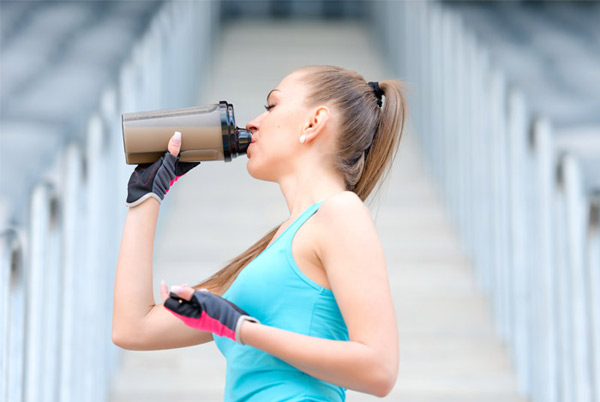
Whey resulting from cheese production contains valuable proteins that still often remain unused. In the EU-funded project Whey2Food the University of Hohenheim and the Fraunhofer IGB, together with partners from industry, are investigating how high-quality whey proteins can be obtained for food with the assistance of a new electromembrane process.
The production of cheese and casein results in large quantities of whey. 81 million tonnes of the watery waste material come together per year in the EU alone. Nowadays about 40 per cent of this is already processed by filtration to make whey concentrate and further processed to provide a wide range of whey products. However, most of the whey still remains unused. In addition to lactose and minerals, whey contains above all valuable milk proteins. Dr. Ana Lucia Vásquez, who heads the project at the IGB, describes the economic potential and the objective of the new project: “The proteins could be used in the food industry as a natural binding agent and as emulsifiers.” She further explains: “They are equally well suited as a functional food supplement in baby formula or dietary foods or as a source of proteins in sports drinks for athletes.”
For these applications the proteins first of all have to be isolated from the whey. There are already basic methods of obtaining specific milk proteins, for example the antithrombogenic casein macropeptide, from whey. However, the chromatographic techniques used for this purpose are complex and are not suitable for a high throughput. Whey concentrate is obtained by means of ultrafiltration. In this process the little whey molecules — water, minerals and lactose — pass through the pores of a membrane while proteins are retained. But here the proteins are only concentrated as a whole, but not separated according to functional protein fractions. Additionally, residues are quickly deposited on the membranes. This fouling impairs the filtration capability so that the membranes frequently have to be cleaned.
To enrich proteins selectively and to add them to foods in accordance with their nutritional or technological-functional properties, the Whey2Food project intends to further develop an electromembrame process initially investigated at the University of Hohenheim. “The method combines pressure filtration through a porous membrane with an electric field. The proteins are not only separated according to their size, but at the same time according to their charge,” Vásquez explains. Compared with ultrafiltration this increases the yield and reduces the cleaning required. “In preliminary tests trials we were able to demonstrate that peptides or protein fragments such as casein macropeptide can be separated from two further typical whey proteins, a-lactalbumin and b-lactoglobulin, with the help of the electromembrane process,” says Professor Dr.-Ing. Jörg Hinrichs from the Institute of Food Science and Biotechnology at the University of Hohenheim.
Now the researchers want to optimize the process for industrially relevant quantities and in conformity with the hygiene and cleaning standards required for food manufacturers. “We will then test the process under realistic conditions in continuous operation with an automated pilot plant on the premises of our project partners Rovita and Schwarzwaldmilch,” says Vásquez. A further advantage of the electromembrane process is a reduction of the fouling. This also lowers the operating costs and the energy consumption.
Since the 1st November 2013 the project “Whey2Food — Enhanced protein fractionation from protein sources for their use in special food applications” is being funded within the scope of the EU-funded 7th Framework Research Program (Grant Agreement No. 605807). The German research partners Fraunhofer IGB and the University of Hohenheim as well as the Belgian VITO institute are developing the process together with a European consortium of companies.
The study done by Fraunhofer Institute for Interfacial Engineering and Biotechnology IGB.